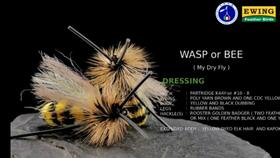
Understanding Spider Bites
 Spider bites can be a cause for concern, especially when it comes to brown recluse spiders. These bites can lead to various symptoms and complications, making it crucial to understand the treatment options available. In this article, we will delve into the details of spider bites, focusing on brown recluse treatment.
Spider bites can be a cause for concern, especially when it comes to brown recluse spiders. These bites can lead to various symptoms and complications, making it crucial to understand the treatment options available. In this article, we will delve into the details of spider bites, focusing on brown recluse treatment.
Spider bites can range from mild to severe, depending on the type of spider and the individual’s immune response. Brown recluse spiders, also known as fiddleback spiders, are known for their venomous bites. These spiders are typically found in the southeastern United States, but they can also be found in other regions.
Identifying a Brown Recluse Bite
 Identifying a brown recluse bite can be challenging, as the symptoms may not appear immediately. However, here are some common signs to look out for:
Identifying a brown recluse bite can be challenging, as the symptoms may not appear immediately. However, here are some common signs to look out for:
-
Redness and swelling around the bite area
-
Wheal, or a raised, red bump
-
Blister formation
-
Pain, which may be mild at first but can worsen over time
-
Darkening of the skin around the bite
It’s important to note that not everyone who is bitten by a brown recluse spider will experience severe symptoms. However, if you suspect you have been bitten, it’s best to seek medical attention promptly.
Immediate First Aid
 If you suspect you have been bitten by a brown recluse spider, here are some immediate first aid steps to take:
If you suspect you have been bitten by a brown recluse spider, here are some immediate first aid steps to take:
-
Wash the bite area with soap and water to prevent infection
-
Apply a cool, wet compress to reduce swelling and pain
-
Keep the affected area elevated to reduce swelling
-
Avoid applying heat, as it can increase the absorption of venom
Medical Treatment
Medical treatment for a brown recluse spider bite typically involves the following steps:
-
Antibiotics: To prevent or treat infection, your doctor may prescribe antibiotics.
-
Pain relievers: Over-the-counter pain relievers, such as ibuprofen or acetaminophen, can help manage pain.
-
Topical treatments: Your doctor may recommend applying a topical antibiotic or antivenom to the bite area.
-
Oral medications: In some cases, oral medications may be prescribed to manage symptoms and prevent complications.
Preventing Future Bites
To reduce the risk of future brown recluse spider bites, consider the following precautions:
-
Keep your home clean and clutter-free, as brown recluse spiders prefer dark, undisturbed areas.
-
Seal cracks and crevices in your home, as these can serve as entry points for spiders.
-
Inspect your clothing and bedding before use, especially if you have been in areas where brown recluse spiders are common.
-
Be cautious when handling items found outdoors, such as boxes or furniture.
Table: Brown Recluse Spider Bite Treatment
| Step | Description |
|---|---|
| Immediate First Aid | Wash the bite area with soap and water, apply a cool, wet compress, keep the area elevated, and avoid applying heat. |
| Medical Treatment | Antibiotics, pain relievers, topical treatments, and oral medications may be prescribed. |
| Prevention | Keep your home clean, seal cracks and crevices, inspect clothing and bedding, and be cautious when handling items found outdoors. |
In conclusion, understanding the treatment for brown recluse spider bites is essential for anyone living in or visiting areas where these spiders are common. By taking immediate first aid steps, seeking medical attention when necessary, and taking precautions to prevent future bites, you can minimize the risk of complications and ensure a safe







